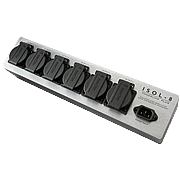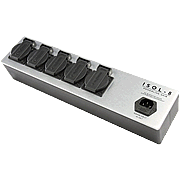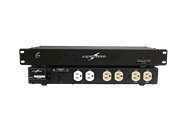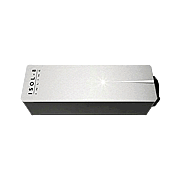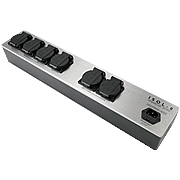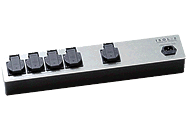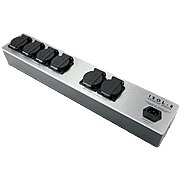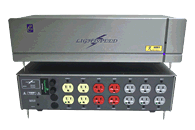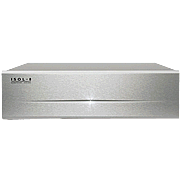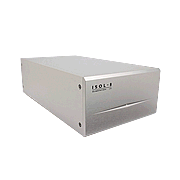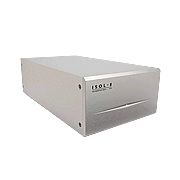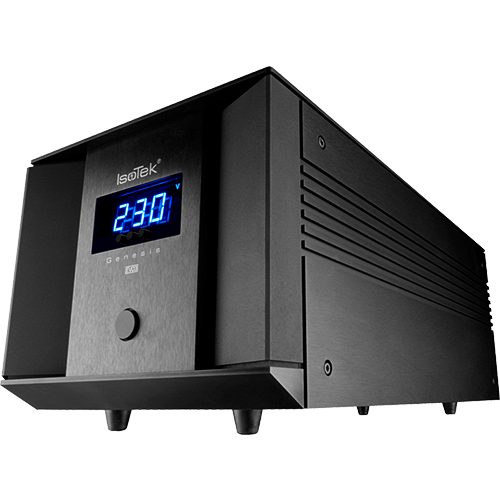Power Conditioning@kemela
Listen to your Hi-Fi after midnight. Sounds a lot better doesn't it! A power filter/conditioner will give the same kind of improvement so you don't have to wait until late at night to enjoy your system at its best.
The need for power conditioning
Most U.S. domestic power supplies are not the pure clean alternating sine wave they are supposed to be. Instead your expensive Hi-Fi equipment is fed fuzzy, spiked, triangulated wave mains power.
Noise and unwanted interference is dumped on to the mains supply in your home from Internet-connected smart devices, LED lighting, light dimmers, and air conditioning motors. Cell phone towers popping up in the neighborhood emit radio frequency interference (RFI). Your ring mains circuit contains many wire joins in which an oxidization layer builds up over time between the twisted wires creating a diode effect. DC voltage offsetting the AC waveform and other waveform distortions can be introduced causing transformers in Hi-Fi components to buzz and send hum to loudspeakers.
The exponential growth and use of these powered devices means that the benefits of power filtration (and shielding on all HiFi cabling) is more apparent than ever.

Avoid office orientated/home improvement power strips
Once you have multiple components you will need more than the two sockets in standard wall outlets especially in older homes where outlets are far apart. Buying an inexpensive power strip with surge protection from a home improvement or office supply store is not the right tool for the job; computers do not pull the same transient power requests as music does. The basic thermistors used for surge protection set a threshold to protect computers from power spikes coming from the wall socket. Unfortunately they can't tell the difference between audio components, especially power amplifiers, from asking for more power for transient musical events and actual power surges. Using these kind of products is like stepping on a hose pipe and will make your system sound worse than plugging directly into wall sockets.
Hi-Fi components and power quality
The purity and availability of power supplied to circuit boards in any Hi-Fi component depends on the sophistication of the power supply section and a large proportion of the cost of parts is spent on it. Less expensive Hi-Fi components have to have simpler power supplies to keep the price low while the better performance of more expensive Hi-Fi components is in part due to elaborate power supply sections that better compensate for mains supply noise, artifacts and irregularities.
Loudspeakers deliver unrestrained musical transients when amplifiers can draw large bursts of power from the mains without impediment. There should be no superimposed hum, random noise, dynamic artifacts or any other unwanted signals and the input to output transform should be as linear as possible. The best power conditioners do not trade off dynamics for noise filtration or surge protection.
It's important that analog source components maintain the musical information in low voltage signals without them being corrupted by noise. Power supply spikes and noise will disturb digital to analog conversion causing jitter and data corruption. Digital devices, including class D amplifiers, generate their own noise causing interference on the mains that can then contaminate other components. Because electrostatic panel loudspeakers are powered and contain lots of wire that antenna-like picks up radio frequencies, they can introduce noise into the amplifier via the speaker cables. Power conditioners use multiple methods to eliminate noise and isolate components from each other.
Even the wow and flutter of turntables will be improved by reducing irregular waveforms and spikes that affect the speed consistency of the motor.
Sonic benefits of power conditioning
Sound stage size, depth, and space is increased. Decaying cymbals and piano harmonics are more cleanly defined. There is a greater sense of how a musician is playing an instrument or using their voice. Music becomes a bit more dramatic and engaging as crescendos are unrestrained and there is greater clarity in quieter passages. Just the same vividness you get when listening late at night.
kemela has a range power filters to suit your system and we strongly recommend investing in one.
